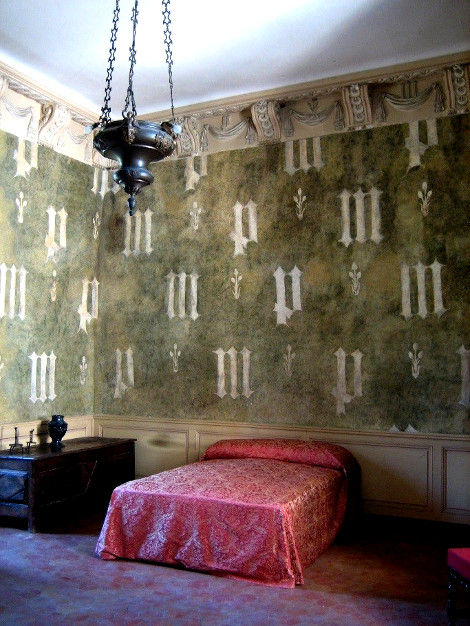The result, obtained at the Carbon-14 Measurement Laboratory (CEA/CNRS/IRD/IRSN/Ministry of Culture) located at the CEA Paris-Saclay Center in collaboration with the University of Fribourg and the Château de Germolles, paves the way for the absolute dating of works painted from the Antiquity to the 19th century. It is published in the journal Scientific Reports on 12 June 2020.
Researchers from the Carbon-14 Measurement Laboratory (LMC14) located at the Paris-Saclay CEA Center have successfully dated samples of murals from the Château de Germolles (Burgundy) and fragments of wall plaster from an old rood screen, since disappeared, in Cordeliers Church in Fribourg (Switzerland).These paints are complex systems: they contain both carbon of organic origin, from lead white (or ceruse, PbCO3), for which radiocarbon dating has only recently been possible2, and inorganic carbon from either another white pigment made from calcium carbonate (CaCO3) or from building materials.
To achieve this discovery, the researchers isolated the carbon from lead white using thermal separation, by heating the paint samples at low temperature. Under these conditions, only the carbon atoms from lead white are released as CO2 – a gas that is easy to recover – while the others remain bound to the calcium carbonate, which is stable up to 600 °C.
The isotopic fraction of carbon-14 (14C/12C) in the CO2 samples was then measured and, after statistical processing, the "14C Ages" associated with these levels were determined using the carbon-14 calibration curve. These "ages" are made up of several time intervals that can sometimes be narrowed down using historical information.
For the Château de Germolles, for example, the acquisition date of the castle led researchers to limit the dating of the paintings to 1380-1400.
For Cordeliers Church, the results make it possible to differentiate between the two decors studied, the oldest of which dates back to 1426-1460. In both cases, the dates when the paintings were carried out are documented and are consistent with the results provided by the carbon-14 analysis."Lead white is a pigment that was widely used by the greatest artists, particularly for painting skin tones, explains Lucile Beck, CEA researcher and head of the LMC14. It was also applied as a preparation layer in most paintings. As this layer often extends beyond the edge of the painting, one option could be to take sample from this area without damaging the work. We are now working to further reduce the mass of material required for the analysis in order to be able to perform absolute dating on easel paintings using this technique."
Carbon-14 dating
Carbon-14 dating requires organic materials, from plants or animals that have taken in CO2 from the atmosphere during their lifetime. However, pigments are most often obtained by grinding inorganic minerals, which do not contain carbon-14, and the organic binders used by painters have degraded over time and now contain hardly any carbon. As for the material that is painted, wood for example, this can be much older than the painting and therefore cannot always be used to date the work accurately.
Carbon-14 dating of lead white was demonstrated in 2018, thanks to the discovery of carbon-14 in lead carbonates used as cosmetics in Ancient Egypt and Greece. At the time, researchers at LMC14 unexpectedly discovered that the carbon in the carbonates was of organic origin and confirmed that the pigment was produced by chemical synthesis, not by the grinding of minerals. The manufacturing process for lead lead white consisted in corroding lead in the presence of fermenting organic matter (vinegar, horse manure, etc.). Used since Greek Antiquity, it lasted, with a few variations, until the 19th century, before being replaced by industrially produced pigments made using petroleum derivatives.
One question remains: how can we differentiate between lead white composed of lead and organic matter and lead whitemade from petroleum derivatives? In both cases, the carbon-14 is long gone. Another isotope of carbon, 13C, could be what separates them...
